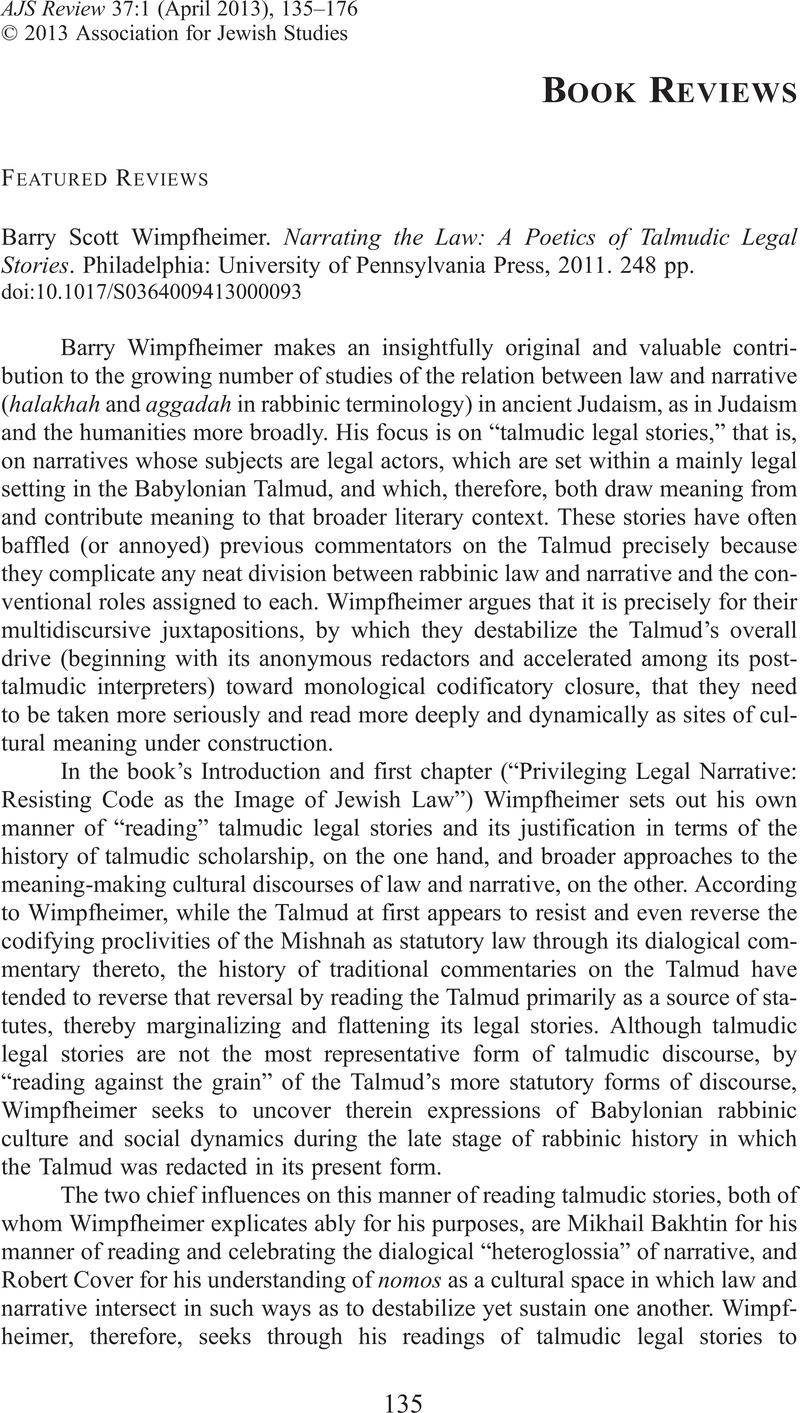No CrossRef data available.
Article contents
Barry Scott Wimpfheimer. Narrating the Law: A Poetics of Talmudic Legal Stories. Philadelphia: University of Pennsylvania Press, 2011. 248 pp.
Published online by Cambridge University Press: 17 May 2013
Abstract

- Type
- Book Reviews: Featured Reviews
- Information
- Copyright
- Copyright © Association for Jewish Studies 2013
References
1. Neither term, in its nominalized form, appears in pre-rabbinic Hebrew. For early rabbinic passages that stress their interpermeability, see Fraade, Steven D., “Nomos and Narrative Before Nomos and Narrative,” Yale Journal of Law and the Humanities 17 (2005): 89–93Google Scholar.
2. Cf. Fraade, Steven D., “Interpreting Midrash 2: Midrash and its Literary Contexts,” Prooftexts 7 (1987): 284–300, esp. 286–287 (with corrigenda in 8 [1988]: 159–60). ,” Prooftexts 7 (1987): 284–300, esp. 286–287Google Scholar (with corrigenda in 8 [1988]: 159–60).
3. See Moshe Simon-Shoshan, “Halachah Lema'aseh: Narrative and Legal Discourse in the Mishnah” (PhD diss., University of Pennsylvania, 2005); idem, Stories of the Law: Narrative Discourse and the Construction of Authority in the Mishnah (Oxford and New York: Oxford University Press, 2012)Google Scholar. At points (e.g., p. 32) Wimpfheimer qualifies his reified representation of the Mishnah.
4. Two noteworthy examples, among many, are the story of Ḥoni the Circle Drawer in M. Ta'anit 3:8 and that of the calendrical dispute between R. Gamliel and R. Joshua in M. Rosh ha-Shanah 2:8–9. While such stories are not necessarily typical of the Mishnah, they are no less so than are the scant talmudic legal stories that Wimpfheimer uses to characterize the Talmud as a whole by using legal stories to read against its “statutory” grain.
5. I presume that Wimpfheimer intends his frequent diagnoses of rabbinic “anxiety” figuratively rather than clinically. Otherwise, it would be hard to imagine the collectivity of rabbis having gone without a good night's sleep for some five hundred years.




